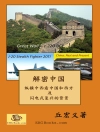It is not possible to fully understand contemporary politics between China and the Dalai Lama without understanding what happened—and why—during the 1950s. In a book that continues the story of Tibet’s history that he began in his acclaimed
A History of Modern Tibet, 1913-1951: The Demise of the Lamaist State, Melvyn C. Goldstein critically revises our understanding of that key period in midcentury. This authoritative account utilizes new archival material, including never before seen documents, and extensive interviews with Tibetans, including the Dalai Lama, and with Chinese officials. Goldstein furnishes fascinating and sometimes surprising portraits of these major players as he deftly unravels the fateful intertwining of Tibetan and Chinese politics against the backdrop of the Korean War, the tenuous Sino-Soviet alliance, and American cold war policy.
Innehållsförteckning
List of Illustrations
Preface
Acknowledgments
Note on Romanization
List of Abbreviations
Glossary of Key Persons and Terms
Introduction: Tibetan Society on the Eve of Incorporation into China
PART ONE: THE ROAD TO A SINO-TIBETAN AGREEMENT
1. Chinese Perspectives
2. Tibetan Perspectives
3. Tibet Appeals to the United Nations
4. Negotiations with Beijing
5. The United States Intervenes
6. The Dalai Lama Returns to Lhasa
PART TWO: THE FIRST TWO YEARS: CONFRONTATION AND ADJUSTMENT
7. Initial Contacts and Strategies
8. The Advance PLA Force Arrives in Lhasa
9. The Food Crisis
10. The Panchen Lama and the People’s Liberation Army
11. First Steps toward Implementing the Seventeen-Point Agreement
12. The Tibetan People’s Association
13. Turning to the Dalai Lama and Removing the Sitsab
14. The Return of the Panchen Lama
PART THREE: COOPERATION AND CHANGE
15. Winds of Change
16. Conflict within the Communist Party in Tibet
17. Tibet’s First Steps toward Socioeconomic Reform
18. Events in India
19. The Dalai Lama Goes to Beijing
20. The Dalai Lama in Beijing
21. The Return to Lhasa
22. Conclusions
Appendix A. Lobsang Samden’s 1952 Letter to Tsipön Shakabpa
Appendix B. Kashag’s 1953 Edict Reforming Debts in Tibet
Appendix C. Agreement of the Secret Resistance Organization in India, 1954
Appendix D. List of Correct Tibetan Spellings
References
Index
Om författaren
Melvyn C. Goldstein is John Reynolds Harkness Professor in Anthropology and Codirector of the Center for Research on Tibet at Case Western Reserve University. He is the author of many books on Tibet including A Tibetan Revolutionary The Political Life and Times of Bapa Phüntso Wangye (with Dawei Sherap and William R. Siebenschuh), Essentials of Modern Literary Tibetan: A Reading Course and Reference Grammar, and A History of Modern Tibet, 1913–1951, all published by UC Press.












